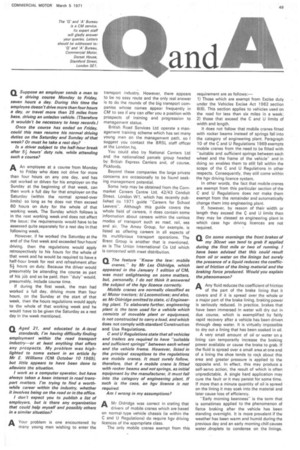Q On some mornings the front brakes of
Page 51

If you've noticed an error in this article please click here to report it so we can fix it.
my 30cwt van tend to grab if applied during the first mile or two of running. I have been advised that this could result from oil or water on the linings but surely the presence of a liquid reduces the coefficient of friction of the lining material and the braking force produced. Would you explain the phenomenon?
AAny fluid reduces the coefficient of friction
of the part of the brake lining that it covers and if it is spread over the whole or a major part of the brake lining, braking power is seriously reduced. In practice, brakes that have been immersed in water will dry out in due course, which is exemplified by fairly rapid recovery after a vehicle has been driven through deep water. It is virtually impossible to dry out a lining that has been soaked in oil.
A very small amount of oil or water on a lining can temporarily increase the braking power available or cause the brake to grab. If the fluid is spread over a small area at one end of a lining the shoe tends to rock about this area and greater pressure is applied to the opposite end. In effect, this may produce a self-servo action, the result of which is often unpredictable. A single hard application may cure the fault or it may persist for some time. If more than a minute quantity of oil is spread on the lining it may soak into the material and later cause loss of efficiency.
"Early morning keenness" is the term that is sometimes applied to the phenomenon of fierce braking after the vehicle has been standing overnight. It is more prevalent if the weather' has been warm and humid during the previous day and an early morning chill causes water -droplets to condense on the linings.




































































































